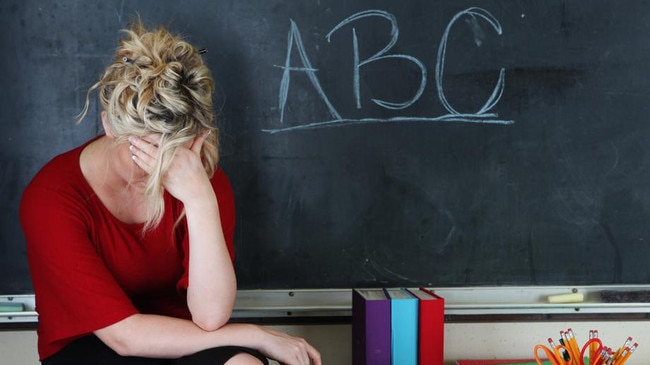Higher pay, cheaper housing and lighter workloads to tackle teacher shortage
Overtime payments, cheaper housing and lower student loans for teachers will be examined by education ministers as part of a recruitment and retention plan.

Overtime payments, cheaper housing and lower student loans for teachers will be examined by education ministers as part of a recruitment and retention plan.
Teacher aides, as well as workers with a trade or university degree, will be given study credit towards a master’s degree in education to fast-track more lawyers, engineers and computing experts into short-staffed classrooms.
Financial incentives to recruit and retain teachers – ranging from higher pay to cheaper stamp duty on housing, superannuation concessions and forgiving student debt – are options to be investigated by the heads of state and territory education departments, as well as the Catholic and independent schools sectors, over the next six months.
The “economic barriers and incentives’’ to stop teachers quitting, and to lure retired teachers back to the profession, will be assessed by the Australian Education Senior Officials Committee. “These will include but are not limited to teacher superannuation scheme rules, taxation arrangements including HELP (the Higher Education Loan Program), salary, career structure, workload and housing affordability factors like stamp duty,’’ the draft teaching workforce strategy states.
The plan, released by federal Education Minister Jason Clare on Thursday, will improve the quality of teaching degrees.
Universities must train “classroom-ready” teachers, with “particular attention to teaching reading, literacy and numeracy, classroom management, cultural responsiveness, teaching students with diverse needs and working with families/carers’’.
Paid internships will be offered to trainee teachers still at university, as well as mid-career entrants to teaching.
The skills, expertise and prior learning of Indigenous Australians, career-change professionals and teacher aides will be recognised through academic credits towards a teaching qualification.
All teaching students will be tested on literacy and numeracy skills in the first year at university to ensure they can receive targeted support if needed.
A $10m marketing and advertising campaign will raise the status of the teaching profession, establish new Teacher of the Year Awards and encourage the public to nominate teachers for Medals of the Order of Australia.
The Greens slammed the “PR makeover’’ and demanded more funding for public schools. “It’s all well and good to create incentives to attract and train new teachers, but public schools need to be properly funded so they can afford to hire enough teachers and support staff to deliver the education our kids deserve,’’ said Penny Allman-Payne, Greens spokeswoman on schools.
“Instead of real, tangible support, Labor is offering teachers a PR makeover.’’
The federal government will contribute $328m to the workforce strategy, including $25m to cutting the workload of burnt-out teachers. It will spend $159m for extra university places to train more teachers, $56m for scholarships worth up to $40,000 to lure the “best and brightest’’ into teaching degrees and $68m to triple the number of career-change professionals to retrain as school teachers.
Private school teachers pushed for a pay rise, while the Australian Education Union, representing public school teachers, welcomed the plan but called for more funding.




To join the conversation, please log in. Don't have an account? Register
Join the conversation, you are commenting as Logout